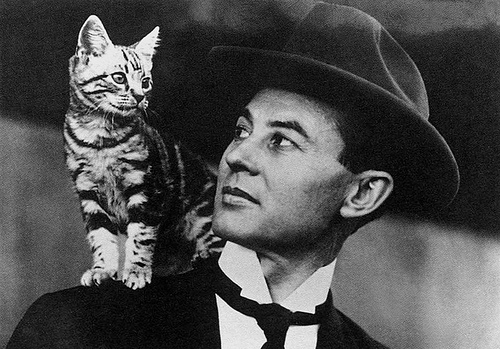Most of the time, cats can travel on flights without the need to be sedated. However, some would be very stressed when subjected to flight. But have you heard about the cat that flew for 71 hours?
Kiddo, the cat, snuck onto an airship in 1910 and traveled with it for the entire 71-hour journey. Kiddo was adopted by one of the airmen’s daughter.
Kiddo, The Flying Cat
In October that year, the entire world, or at least a large portion of the eastern United States, turned their gaze toward the most recent fantastical attempt at an accurate, sustained flight. All eyes were on New Jersey, not heavenward, but you get the idea, where the airship America and its crew hoped to be the first human-crewed flight across the Atlantic.
If the long-distance human-crewed multi-passenger flight were to become a reality, if those longing eyes on the ground in New Jersey had a real chance to fly to Europe, it would be on lighter-than-air airships like America or rigid-framed German zeppelins. Both were propelled by hydrogen or helium. Small engines propelled both aircraft. On the other hand, the zeppelins had a large frame that supported the balloon fabric surrounding them.
From Atlantic City, Wellman and his crew took off in a small passenger cabin with a wooden lifeboat attached to the bottom. Onboard were Wellman, engineer Melvin Vaniman, navigator F. Murray Simon and Jack Irwin, a radio operator.
The flight struggled from the start, battling bad weather and engine problems caused by sand from the New Jersey shore. The engines failed off the coast of New England, and the ship began to drift southward. At that point, the journey appeared doomed. (Source: Air and Space)
How Did They Get Kiddo Off the Plane?
Storms and engine failure plagued Kiddo and the rest of the crew during their 71-hour flight. After traveling over 1,300 miles from its launch, the America sent a distress signal. Kiddo and the crew were transferred to a Royal Mail steamship via the airship’s lifeboat. America drifted away, no longer weighed down by the boat, crew, and cat, and eventually crashed off the coast of Maryland.
Kiddo preferred the sea-faring portion of the journey, according to the airship’s navigator, Murray Simon; he described Kiddo as perched on the lifeboat’s sail, washing his face in the sun, a pleasant picture of feline content.
Despite not crossing the Atlantic, the America set a new record for the longest continuous flight. Kiddo returned to dry land as a hero and even met his adoring public during a brief residency in a gilded cage filled with pillows at a New York City department store and retired from aviation, moving in with one of Wellman’s daughters. Kiddo and his nine lives were credited with helping the crew survive the perilous journey. (Source: Air and Space)
Image from Animal.Howstuffworks
